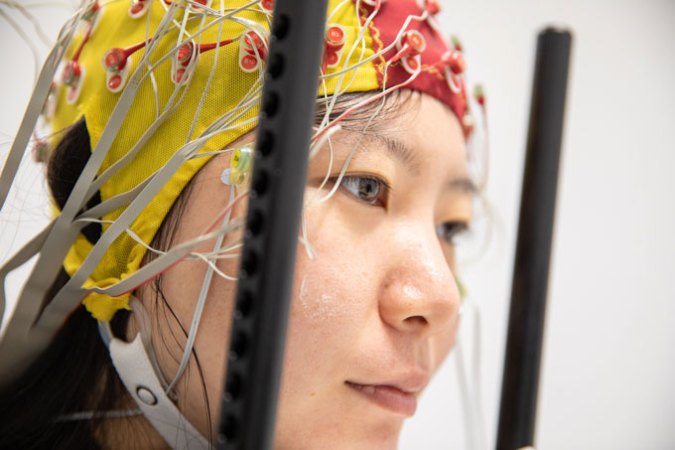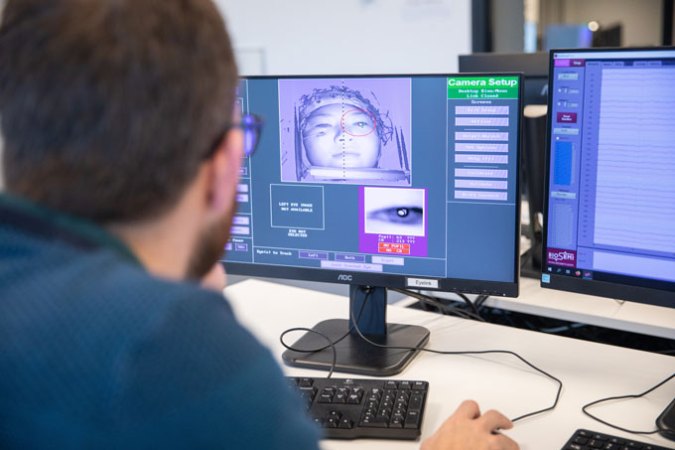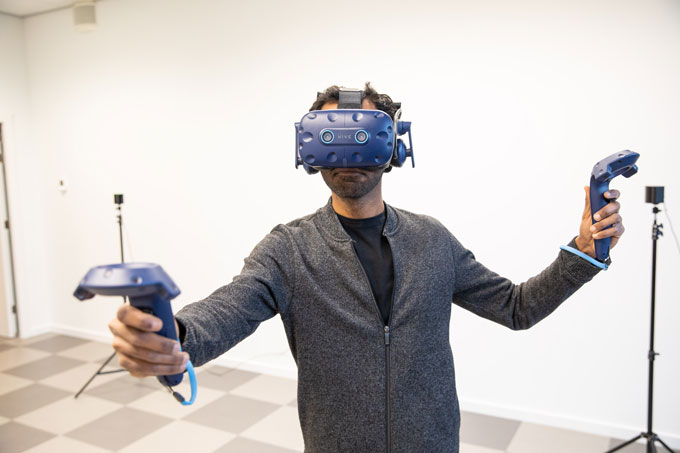A cyclist is pedaling on the road. Signs, trees and fire hydrants pass by. As they cycle, their brain receives information from what they have perceived but can no longer see. Their brains sort through that information—color, shape, and text in signs, for example—and pick out what’s most important. Based on this, the motorcyclist takes the right turn and continues.
Freek van Ede uses a lot of bicycle metaphors. This makes sense to a researcher in the Netherlands. A cognitive neuroscientist at the Vrije Universiteit Amsterdam, van Ede studies attention. Its focus is not on external attention—what one is looking at or paying attention to at the moment. Instead, van Ede is trying to understand internal attention—how the brain focuses on and grabs exactly what it needs from large amounts of incoming information to guide future behavior.
Van Ede thinks of the brain as an organ of reception. Whether we’re riding a bike, driving a car, or catching a ball, using recent experience to guide future actions is a process our brains are carrying out at all times. “It’s really at the core of recognition,” says van Ede. This process depends on working memory, the ability to store short-term information, but also on attention – because we have to select from that stored information to translate it into action. “It’s really a fundamental process and I think that’s what attracts me to it. And I want to understand how it works.”
Although scientists often form subdisciplines that treat different aspects of brain function as separate areas of research, van Ede hopes to combine studies of working memory and attention to better understand thought as a whole. Along the way, van Ede and his colleagues have developed new techniques to measure exactly how people can process the world around them.
Van Ede and his collaborators “have really pushed the investigation of the relationship between attention and working memory in a kind of new and fresh direction,” says Tobias Egner, a cognitive neuroscientist at Duke University. “It’s really a new momentum in the last decade, and I think Freek’s work is quite influential in that.”
Paying attention to time
During his undergraduate studies at Utrecht University in the Netherlands, van Ede was thrilled to discover that he could continue to study and learn throughout his career—all he had to do was become a scientist. He particularly remembers what drew him to his eventual postdoctoral mentor, Kia Nobre, who is now at Yale University. He recalls that he “just read her studies and thought, “Hey, there’s someone who does things a little differently than most people do them.”
At the time, most cognitive neuroscientists were looking at attention in terms of space—placing blocks in different places on a screen, for example, and asking people to choose between the blocks. Nobre, however, was interested in how time might play a role.
Van Ede also began to think about the question of time. After all, we don’t spend our lives frozen in time, responding to objects on a screen. We move through the world and see things in order. “When we do a dance, or even ride a bike or anything we do,” says van Ede, “our movements are carefully orchestrated in time.”
Getting a more realistic picture means measuring brain activity in real time, which is why van Ede uses electroencephalography, or EEG.SN: 7/6/21). “It’s amazing that we can put an electrode in someone’s skull … and we can measure the electrical activity emitted by the brain,” he says. “This means we can measure brain activity as it’s happening.” People can also move freely with the EEG cap, and thus experience the world more realistically.
They have eyes
At first, van Ede and his colleagues were pairing EEG with eye-tracking data—a way to ensure that participants were looking at what they were told. “One day, I decided to dive in and explore eye data,” says van Ede. “I guess out of curiosity really.” He found that when someone was asked to remember something about an object that had been on the screen, their gaze returned to where the object had been, even though it was no longer there.
This movement was recognizable as microsaccades – small unconscious movements that your eyes make many times per second. These microsaccades are invisible to the naked eye and are smaller than the saccades your eyes make two to three times per second to take in a visual scene.


When study participants shifted their attention to focus on where an object had been, microsaccades were systematically drawn in the direction of that attentional shift. “We soon realized that this discovery also opened up new possibilities for ‘tracking the mind’s eye,'” says van Ede, and thus deciphering what information the brain uses to plan future actions.
Van Ede’s lab has used the technique to show that when preparing for the future, the brain doesn’t hold pieces of different information and waits until all the information is available to make a plan. Instead, the brain plans possible actions as each piece of information arrives—although the brain can only choose one plan in the end.
Van Ede “seems to be very good at putting new twists on old designs” for a task, says Egner, “of looking at new measures and old measures in new ways.”
The surprising discovery is emblematic of the curiosity-driven research that van Ede hopes to emphasize in his lab. A basic understanding of how the brain plans actions may one day help us understand memory disorders or attention problems, but that’s not the main driver. What he and his team choose to study is “a little bit based on our intuition, even what’s interesting, or based on some intriguing findings that we want to pursue,” says van Ede.

In recent work, van Ede and colleagues are looking for signs of systematic entrainment of microsaccades while participants play in virtual reality. Study participants work inside a virtual world where objects pass by, such as road signs, instead of flashing on the screen, as is typical in such tests. Meanwhile, van Ede tracks tiny eye movements to see how the participants’ brains are using information they’ve recently encountered to make a plan. It’s one step closer to cycling through the streets of Amsterdam.
#studying #eyes #researcher #explores #brain #sorts #information
Image Source : www.sciencenews.org